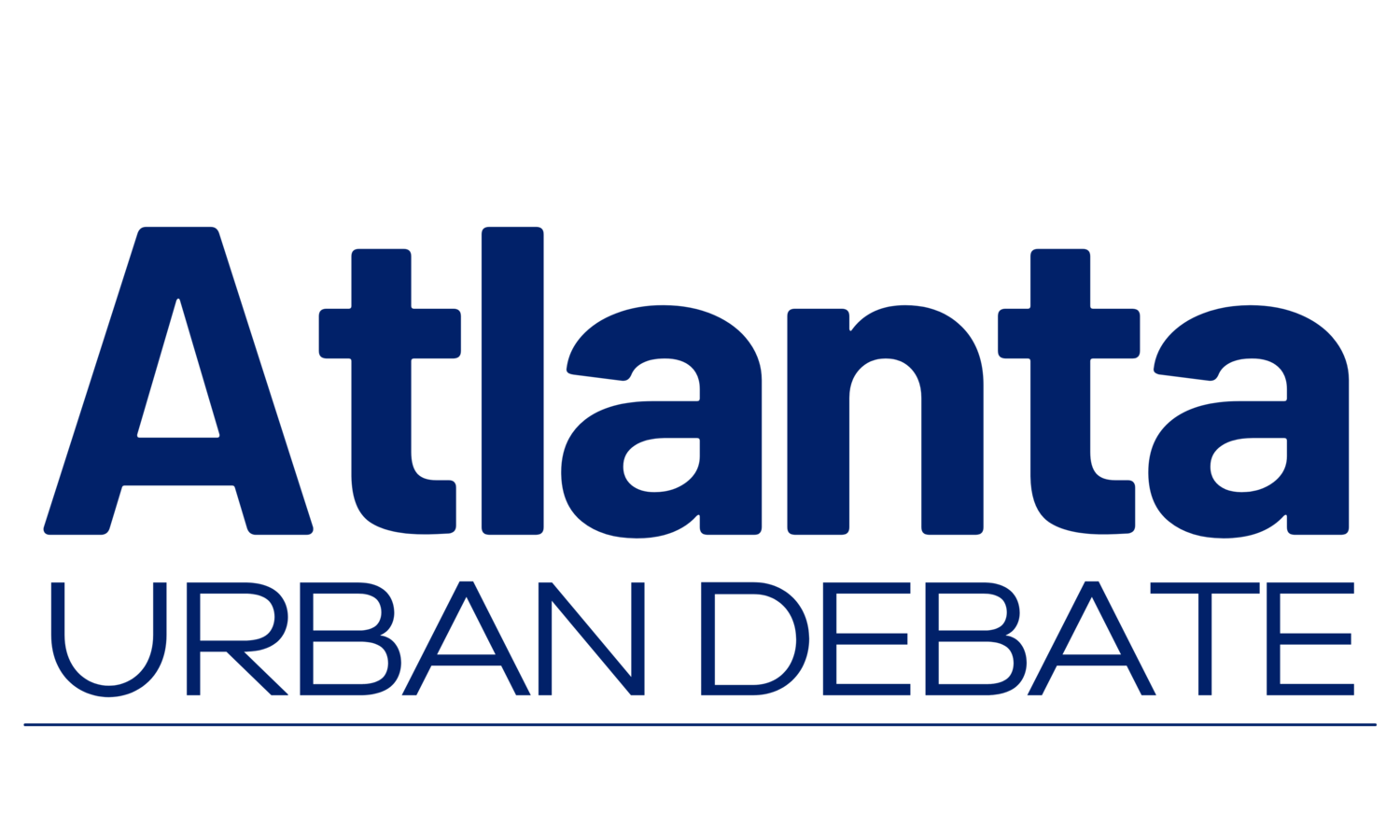The Atlanta Urban Debate League is committed to providing excellent debate education programs, services, and opportunities to diverse students, educators, and members of the community!
High School Open Curriculum Guide
Skills from Novice Debate
Making Arguments (ARE)
In novice debate, you learned that an argument consists of three parts: assertion, reasoning, and evidence. The assertion is the basic point you’re trying to make, the reasoning is some logic to support your assertion, and the evidence provides facts that back everything up.
Responding to Arguments (DR. MO)
You also learned four strategies to use when responding to arguments: deny, reverse, minimize, and outweigh. When you deny an argument, you say it’s false. When you reverse an argument, you say its opposite is true. And when you minimize or outweigh an argument, you say that your arguments are more important than your opponents’ claims.
Impact Comparison (MR. T)
You learned how to compare your impacts to your opponents’ impacts. To win a debate round, you must prove to the judge why your side is more important than your opponents’ side, and to do so, you must prove why your impact is a bigger deal. You learned three areas that we weigh impacts on: magnitude (size or scale), risk (probability), and timeframe (amount of time it needs to take place).
Public Speaking (2PAC)
You learned that debate isn’t just about what you say, it’s about how you say it. The best debaters understand and use all parts of public speaking – the two ways to communicate (verbal and non-verbal), their presentation, their audience, and their content – to give a good speech. Remember to use inflection when reading tags, not to make distracting hand gestures, and to be fully prepared before beginning your speech.
Choosing Your Arguments
As an intermediate debater, you learned how to use multiple advantages, disadvantages, and affirmatives. You learned how to pick between them before the round based upon impact quality and evidence quality, and you learned how to pick between them during the round based on your judge and the other team’s answers.
Judge Adaptation
You learned how to deal with different kinds of judges, from parents to coaches to experienced debaters. You learned that you had to ask the judge questions before the round. You also learned how to read their body language to modify your strategy during speeches or cross-examination.
Evidence Comparison (ABCD)
You also learned how to compare different pieces of evidence. You learned that the author of a card’s qualifications can help (or hurt!) your side, you learned that the basis for a piece of evidence is best if it cites multiple studies, you learned that the context within the evidence can help prove or disprove the argument, and you learned that the date of the card can shape how relevant it is to present-day debates.
Debate Structure and Longer Speech Times
Lastly, you learned the basic structure of a debate round. While the speech times are changing in Open, the point and order of each speech remains the same. You know that a debate consists of constructive and rebuttal speeches, that you must ask cross-examination questions, and that you have five minutes of prep time. Here’s a chart, just as a reminder:

